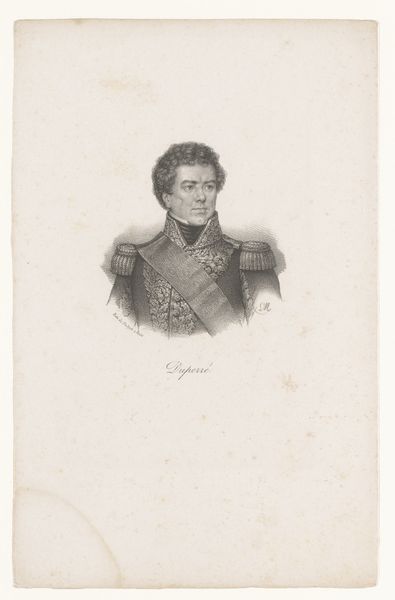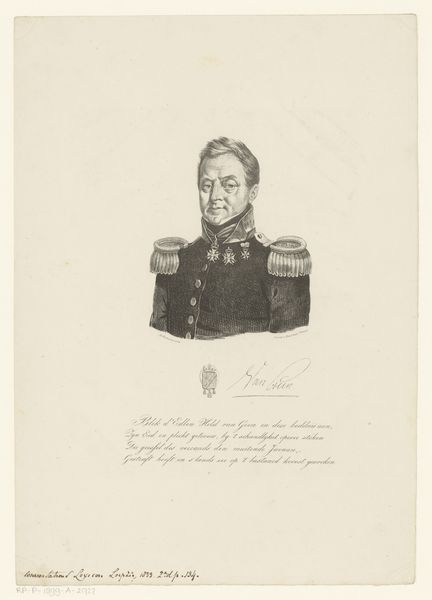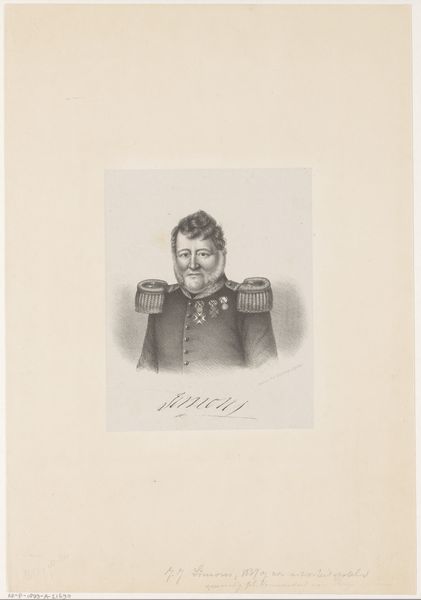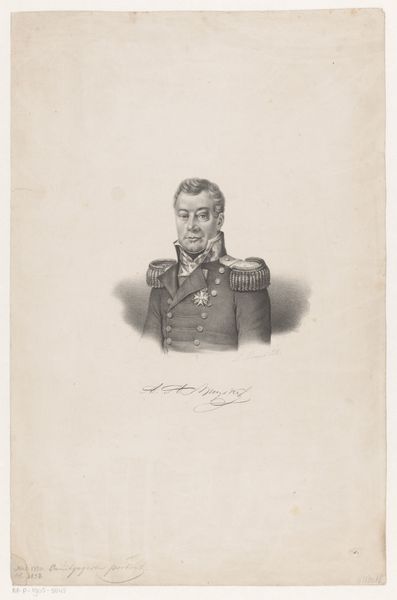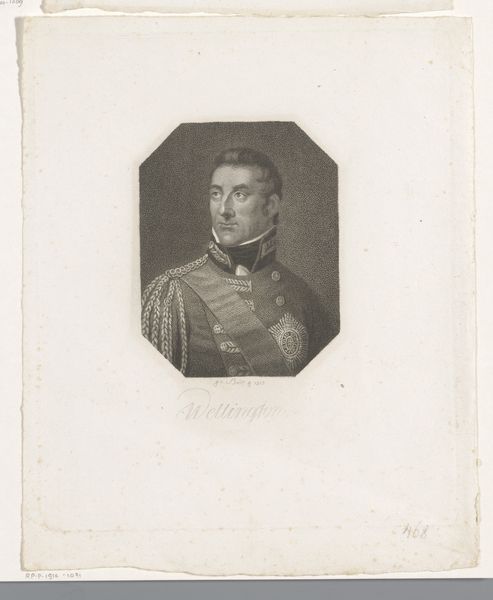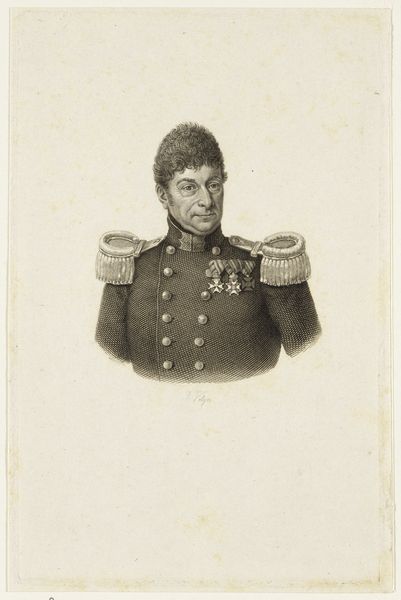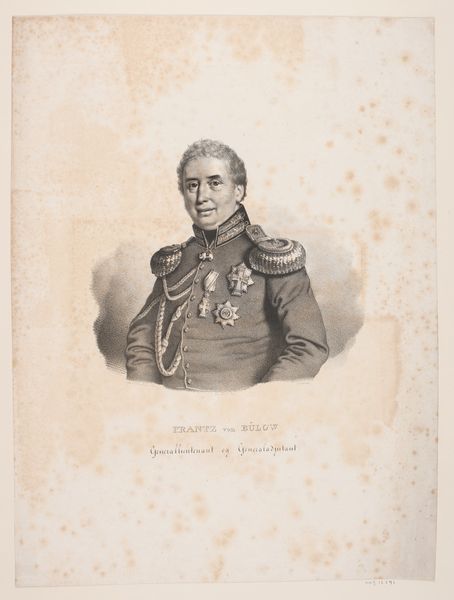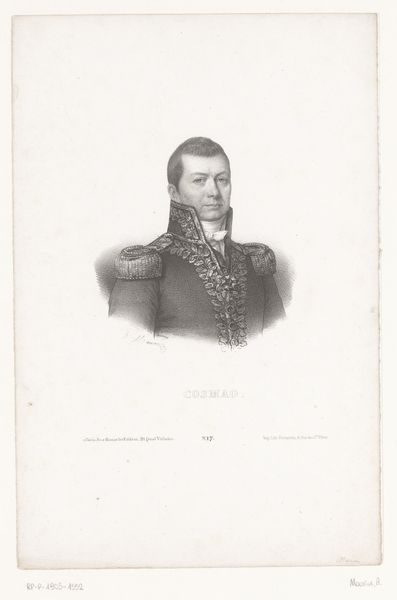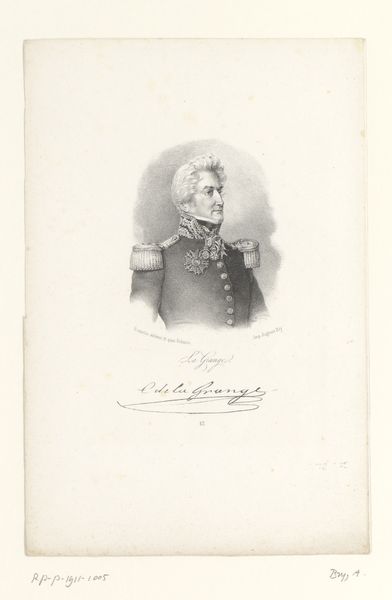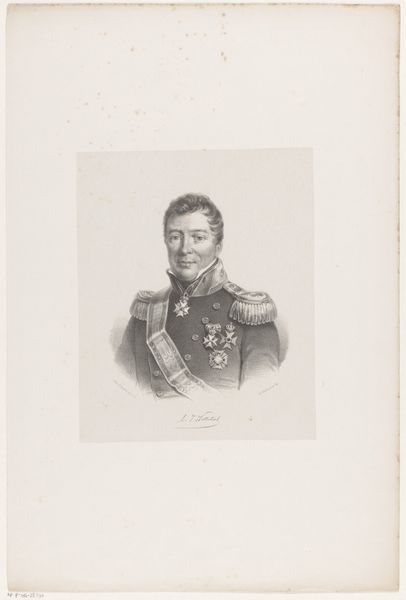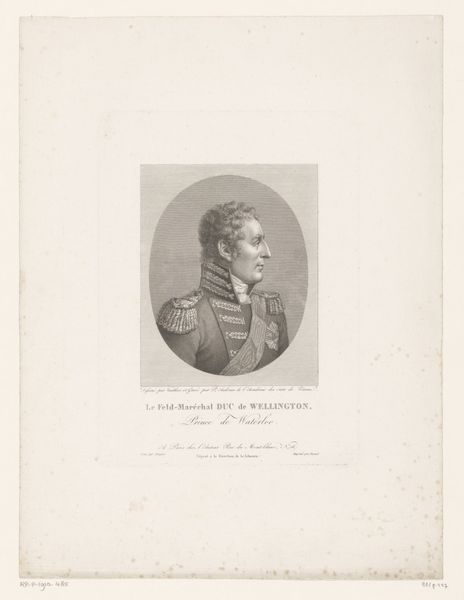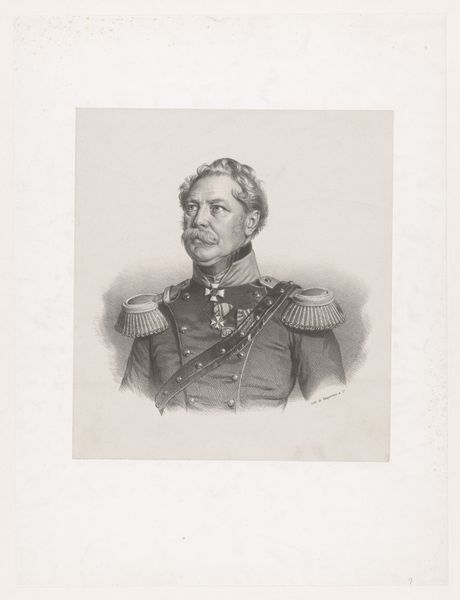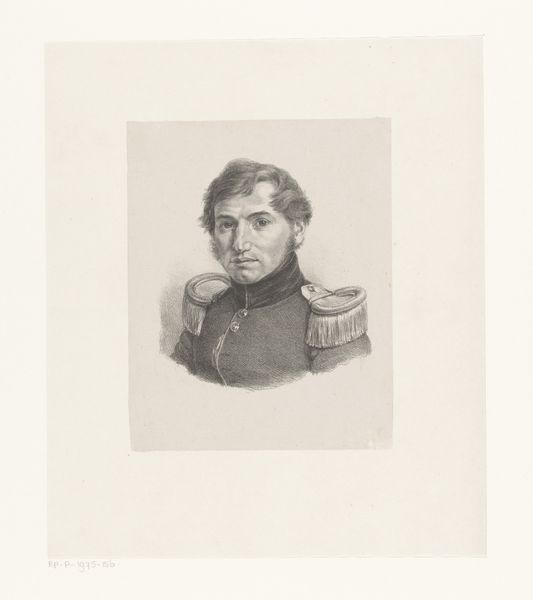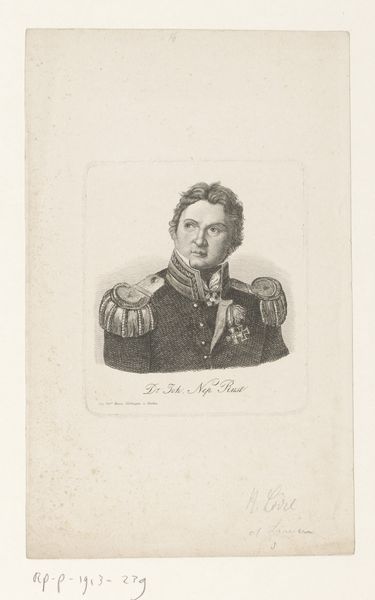
drawing, pencil
#
pencil drawn
#
drawing
#
neoclacissism
#
pencil sketch
#
pencil drawing
#
pencil
Dimensions: height 235 mm, width 179 mm
Copyright: Rijks Museum: Open Domain
Curator: Well, hello there! Look at this drawing, this little jewel! It's titled "Portret van een onbekende man, mogelijk De Stuers"—Portrait of an Unknown Man, possibly De Stuers—by Jean-Baptiste Madou. The Rijksmuseum holds it. A pencil sketch. Just lovely. Editor: My first thought? This man carries the weight of history on his shoulders. His eyes, though subtly rendered, suggest both resolve and perhaps a hint of melancholy. The uniform, indicative of status, hints at power dynamics—who commissions a portrait and why? Curator: Ah, the mystery of identity! Madou's dates place him in a fascinating period, 1806 to 1877. The Neoclassical influence is unmistakable, isn't it? The precise lines, the emphasis on form. He reminds me a bit of those daguerreotypes, all stiff and formal, but here, there’s a breath, an almost fleeting sense of humanity. Editor: Precisely! Neoclassicism served as visual rhetoric, projecting ideals of order, reason, and civic duty. So, depicting an "unknown man" in such a style compels us to question what that man *represents* to those commissioning or viewing this artwork at the time. How is power visualized, negotiated, consumed? Curator: I adore the technique! The hatching, the subtle shading—it's a masterclass in economy. Pencil captures a likeness so directly, doesn't it? Like whispering a secret onto paper. Editor: True, the accessibility of the pencil – both in cost and ease of use – meant it played a significant role in democratization of art and portraiture. This contrasts to the elite connotations associated with oil paintings of the era. It offers the ability to reach different groups of people within the social hierarchy. Who gets remembered, by whom, and why? Curator: "Unknown," yet preserved. Isn't there a sweetness in not needing grand labels to feel moved by someone’s essence? Editor: A sweetness perhaps... but also a potential erasure. By remaining "unknown," he becomes symbolic, a vessel onto which we project narratives of power, identity, and representation, whether he consented to those narratives or not. Curator: Beautifully put! I find myself wanting to sketch *him* now. Re-interpret his stillness. Editor: And I’m intrigued by who he might be and why we, today, are still looking. Whose stories are we still unearthing?
Comments
No comments
Be the first to comment and join the conversation on the ultimate creative platform.
